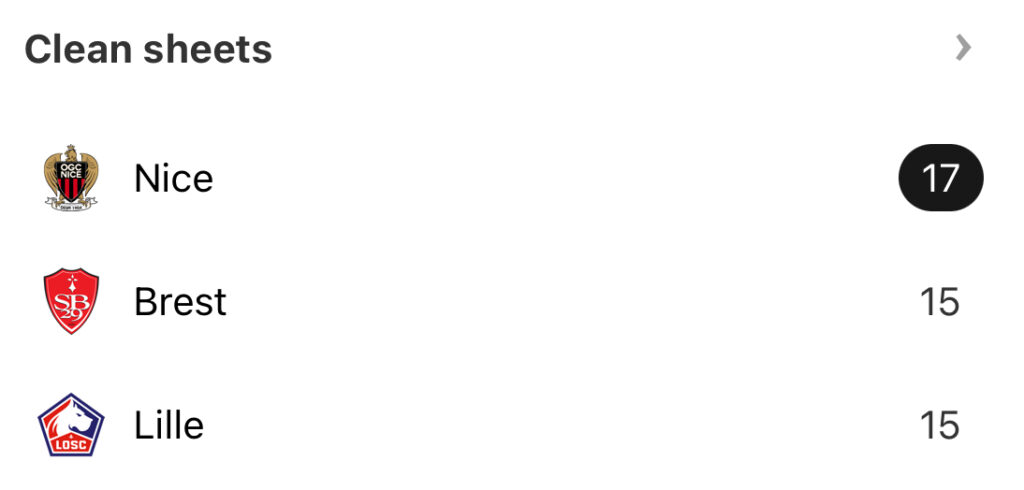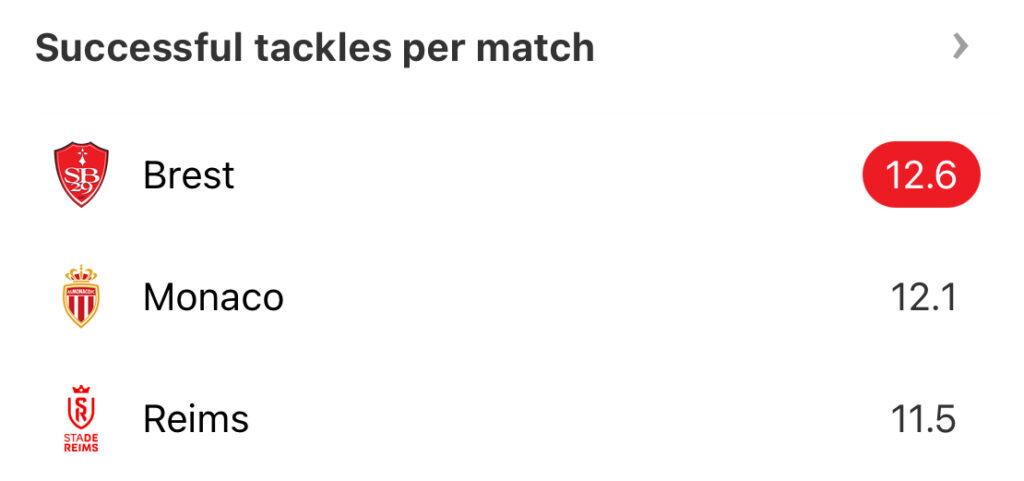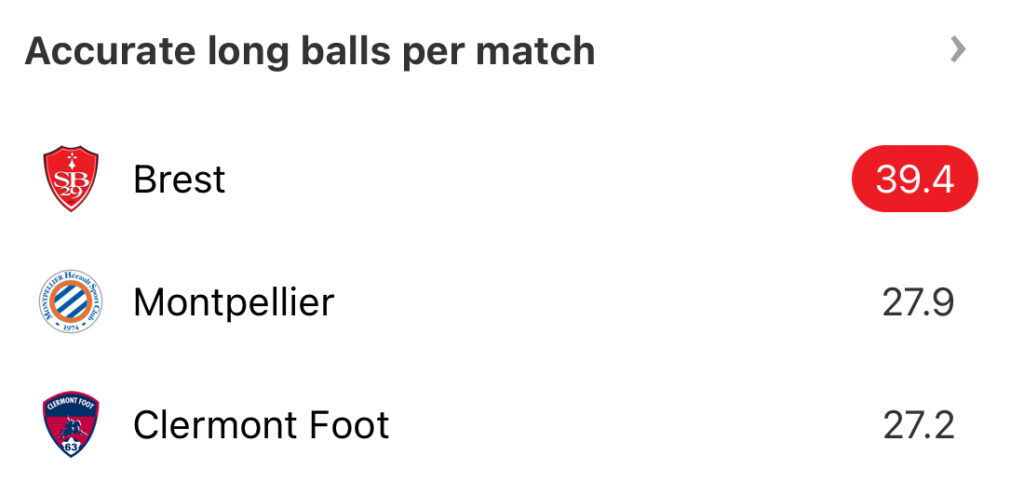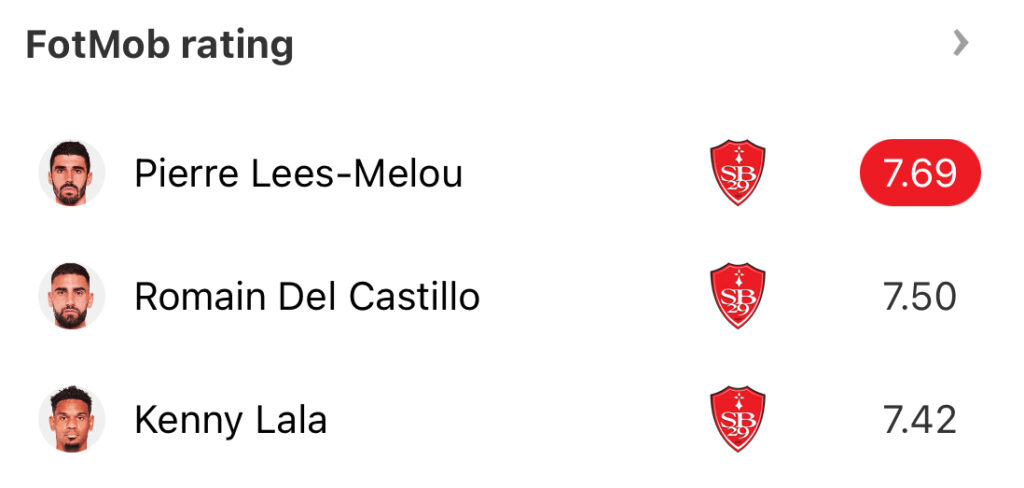Analysis: How Stade Brestois burst on to the European Scene
Having just about survived relegation in France last season, Brest completely turned their fortunes around this season as they competed towards the very top of the Ligue 1 table. They held down the runners-up spot for a good stretch of the season but dropped off a little towards the end only to bounce back crucially on the final day to claim the last podium position and with it, direct qualification to next season’s UEFA Champions League.
By Neel Shelat
A typically relegation-battling side qualifying for the Champions League is impressive enough in itself, but the achievement becomes all the more incredible for Stade Brestois who will be making their European debut on the continent’s greatest stage. Indeed, Brest do not have much of a glorious past to speak of despite tracing their history back over 120 years, with no major trophies in their cabinet and just one Ligue 2 title.
They were down in the second division as recently as 2019, when they won promotion as runners-up. They went on to finish in the bottom half of each of the next three Ligue 1 seasons, avoiding the drop by just a point on one occasion. So, as the division trimmed itself from 20 to 18 teams by sending four clubs down last season, the Bretons were among the relegation favourites.
About halfway through the campaign at the turn of the year, Brest found themselves in the drop zone with fewer points than matches played. At this point, they made the eyebrow-raising decision to appoint Eric Roy as their new head coach, giving him his first such role in well over a decade. That proved to be a masterstroke, as the 56-year-old Frenchman comfortably steered them to safety before going on to win coach of the year in 2023/24 for orchestrating an absolutely brilliant campaign.
Defensive Discipline
A solid defence is the key to any successful relegation battle, so that is what Roy prioritised when he moved to Brittany. In his 21 games in charge of the club last season, Brest only conceded a goal per game – a significant improvement from their prior average of nearly 2 goals conceded per game.
The Pirates carried that defensive security this season, maintaining their average of a goal conceded per game which was the joint third-best in the league. They also kept a great deal of clean sheets and grounded out five single goal victories.

Their collective commitment to tracking back was quite impressive to watch, particularly from the wingers who would often drop into a back five in order to support their full-back. Generally, though, Brest’s low block followed a solid 4-4-2 or 4-4-1-1, with very little space between the two banks of four that defended the box.
This season, however, Brest also looked to defend high up the pitch and started with a press. They did so in a 4-2-3-1 or 4-1-4-1 shape depending on the opponent’s midfield configuration in order to adopt a player-oriented approach, which proved pretty successful. The Bretons generated the second-most high turnovers in the league and they got stuck into a fair few tackles.

Ultimately, Brest did benefit from a bit of luck at the back too as they conceded just 34 goals despite allowing chances worth 39.4 goals in terms of xG, but even that was the fourth-best tally in the league and better even than champions Paris Saint-Germain. Clearly, their defensive foundations have been supremely solid under Roy.
Direct Attacking
Brest’s tendency to drop into a low block and defend deep after their press is beaten also feeds into their attacking approach, which was pretty direct.
When they were not counterattacking, though, Roy’s side did not mind slowing things down and circulating the ball around the back. Their intention was to lure the opposition out of their block, creating space in behind which could be targeted with long balls. As a result, they had the third-highest possession average in the league and the most accurate long balls by far.

The key player in this respect was former Norwich City midfielder Pierre Lees-Melou, who averaged over 50 successful passes and 6.8 accurate long balls per 90 this season. He was the man who dictated his side’s tempo from the heart of midfield and launched their attacks, making him the team’s most important player by far.

Brest’s attacks were targeted down the flanks as their wingers worked very hard to chase down those long balls and were supported by the full-backs and midfielders who contested the second balls. Ultimately, their moves mostly culminated in crosses, which is why they had a league-high average of 6.1 accurate deliveries per game.
They do have room to improve in this respect, though, as their two main strikers Steve Mounié and Martin Satriano both underperformed their xG by over two goals. This is an area they might want to work on over the summer as they prepare for their European debut.
How Will Brest Fare Next Season?
As impressive as this season has been, it is important to keep in mind that Brest’s capacities and infrastructure are still those of a lower-midtable Ligue 1 club. They had the 5th-lowest player payroll in the division this season, which was about a fifth of the likes of Marseille, Monaco and Lyon, let alone PSG. Their 15,000-seater Stade Francis Le Blé has not been deemed fit by UEFA standards, so they will have to play their Champions League games elsewhere.
The one big upside of Roy’s straightforward approach is that it is not overly reliant on individual quality. Bar Lees-Melou, there is no particularly important or irreplaceable player in this Brest squad even within the constraints of their budget. As a result, they are less prone to getting their players picked off in the transfer window than other overachievers around the continent such as Bologna and Stuttgart, and even if they do lose some players, they should be able to find replacements comfortably.
Even by underlying numbers and Expected Points (xP), Brest performed at a level that should have comfortably placed them in the top half of the Ligue 1 table at the very least, so a relegation battle seems very unlikely unless they suffer a sudden drop-off next season. They ought to strengthen their squad a bit in order to balance their Champions League commitments, where the new Swiss format may well offer them a good opportunity.
As opposed to the previous group stage format where Brest would have had to face three stronger teams (by virtue of being a Pot 4 side) home and away, they will now get an even spread in terms of the quality of their opposition – in theory at least. If that is indeed the case, they will have a serious chance of picking up points in a few of their matches, and as 24 of the 36 group stage contestants will advance to the knockouts, it is not impossible to envision Brest being among them.
(Cover image from IMAGO)
You can follow every game in Ligue 1 and the Champions League live with FotMob — featuring deep stats coverage including xG, shot maps, and player ratings. Download the free app here.